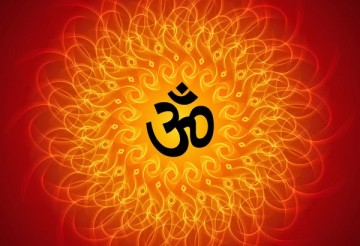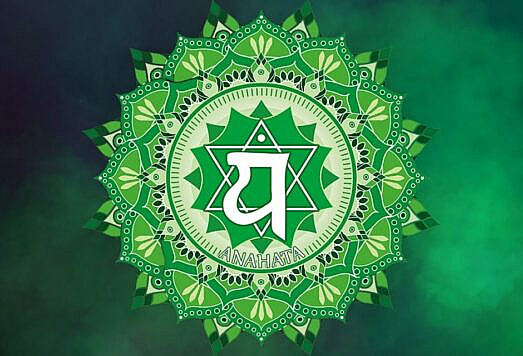There are four paths of yoga to achieve self-realisation. Detachment is key in all four paths of yoga.
Karma Yoga
Karma Yoga is the path of actions/deeds. Karma is derived from the Sanskrit word Kri – to do. Every deed is karma. In philosophy karma means the result of actions. But, in Karma Yoga, karma means work. Nobody gets what he does not deserve, this is the eternal law of karma. The law of karma means cause and consequence. According to the Sankhya philosophy nature is composed of three forces denominated in Sanskrit by Sattva, Rajas and Tamas. In our world this is manifested as balance, activity and slowness. Tamas is characterised by darkness and inaction, Rajas in activity expressed by attraction and rejection and Sattva is the balance between action and inactivity. Karma Yoga, in particular, has to do with these three forces. To study Karma Yoga we have to know what duty is. We have to help others without asking anything. What is Karma Yoga? The Knowledge of the Secret of the work. Whole universe works, for salvation, for freedom. Karma Yoga is the Science of Work.
Bhakti Yoga
Bhakti Yoga is the devotional path. This path is characterised by devotion through worship & rituals. Devotion to Ishvara (God), and nothing else, is devotion. Devotion to gods or ghosts is creation of ritual karma. This does lead to results, but does not lead to salvation (moksha) in the end. When devotion to gods represent the one God, then worship does lead to bhakti and salvation. Every religion or sect shows man an ideal, but the eternal Vedanta offers humanity an endless number of opened ports to enter the treasure room of God. With loving insistence Vedanta is showing the numerous roads, which by the radiating suns of God have been carved out in the hard rock of realities of human existence. Bhakti Yoga is telling us not to hate or disapprove of another religious form. Being devoted to one ideal (Eka-Nishta) is absolutely necessary for a starting devotee. If the devotee is serious, the simple seed he is worshipping will grow out to be a full awesome tree with roots, which is branching to all sides in earth of religion. Then he will experience that the chosen ideal by him, was not other than which is worshipped by all religions and sects by different names. Detachment of a devotee is a result of love.
Jnana Yoga
Jnana Yoga is the path of knowledge/discriminative wisdom. The Vedanta philosophy is the cornerstone in the path of Jnana Yoga. Advaita Vedanta philosophy is the most popular subdivision of Vedanta, where non-duality (advaita) is a central point of the philosophy. The password of Vedanta is realisation of religion, no talking can help you. But the realisation is not a simple thing. HE is hiding in every atom, who is hidden in each heart. Vedanta is telling us that each soul is pure and wise, but is covered by a thick layer of ignorance. The Vedanta philosophy does not recognise good or bad. It sees everything is relative. What brings joy today can bring sorrow tomorrow. It also recognises the soul as eternal, immortal and indestructible. Studying the highest scriptures in Hinduism, the Veda’s, will not even reveal God. ‘’The Lord reveals himself to whom he pleases.’’ Realisation is the main theme of all Upanishads (Vedanta).
Raja Yoga
Raja Yoga is the Royal path of Yoga. This path is eightfold (Ashtanga) consisting of:
Yama – moral code. Purifying the mind (Chitta) occurs via Yama, which consists of five elements:
Ahimsa – non-violence, Satya – truthfulness, Asteya – non-stealing, Brahmacharya – chastity, Aparigraha – non-possesiveness.
Niyama – personal discipline. Aids to succeed in yoga and consists of five elements:
Saucha – purity of body, speech & mind, Santosha – contentment, Tapas – perseverance, Svadhyaya – self-study & introspection, Ishvarapranidhana – devotion & surrender to God
Asana – body postures are there to prepare the body which should be kept free, chest, shoulders and head should be in one straight line.
Pranayama – breathing exercises. Pranayama means controlling the vital force (Prana), of which breath is the physical manifestation.
Pratyahara – withdrawal of senses. We close our eyes before meditation and withdraw our senses.
Dharana – concentration on an object. For instance, focus on the heart or centre of the head.
Dhyan – meditation. Different methods of meditation can be performed.
Samadhi – deep meditation/superconscious state. The yogi learns that the mind has a higher plan of existence, above the ratio, Samadhi – a superconscious state and when the mind is in that superconscious state, then the knowledge above the ratio is able to enter a human. The purpose of the different steps in Raja Yoga is to bring ourselves into the superconscious state in a scientific manner.
Source: Swami Vivekananda, Karma-, Bhakti-, Jnana- and Raja-Yoga








